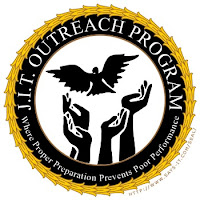Since 1992, 45 states have passed or amended legislation making it easier to prosecute juveniles as adults. The result is that the number of youth under 18 confined in adult prisons has more than doubled in the past decade. This phenomenon is challenging the belief, enshrined in our justice system a century ago, that children and young adolescents should be adjudicated and confined in a separate system focused on their rehabilitation.
In 1997, the Bureau of Justice Assistance funded a nationwide study of juveniles in adult correctional facilities to help policymakers and criminal justice practitioners form an effective response to this critical issue. Juveniles in Adult Prisons and Jails: A National Assessment is the product of that study. This report begins to answer important questions about this vulnerable population: What is the extent of juvenile confinement in federal, state, and local facilities? What types of facilities are used to house juvenile offenders? What happens to juveniles in the adult system? Are juveniles in adult facilities educated, treated for substance abuse, and taught skills that will help them find a job after their incarceration? Are prisons and jails protecting young offenders from physical, sexual, and psychological abuse? What are the alternative strategies for housing offenders sentenced to long terms in adult facilities?
As the findings of this study show, there are important steps we can take now to improve the well-being of juvenile offenders in adult facilities. We can develop specialized vocational, sex offender, and substance abuse programs tailored to the developmental needs of youth. We can ensure that staff in adult facilities take seriously their federal mandate to provide regular and special education services to youth in their care. And we can do much more to ensure the safety and care of young offenders who interact with adult offenders.
The development of a distinct justice system tailored to recognize the mitigating factors associated with juvenile crime is recognized as one of the most progressive developments in the evolution of criminal justice in the United States. Until the 20th century, no formal differentiation had been made between society’s response to crimes committed by juveniles and its response to crimes committed by adults. Beginning in Illinois in 1899, juvenile court systems were instituted throughout the United States to place greater emphasis on the welfare and rehabilitation of youth in the justice system. Specialized detention centers, training schools, and youth centers were developed to confine and treat delinquent youth apart from adult offenders.
These facilities were to provide a structured, rehabilitative environment in which the educational, psychological, and vocational needs of youthful offenders could be addressed. Although system crowding and funding shortfalls have frequently compromised achievement of these objectives, the goal of the juvenile court system has remained focused on protecting the welfare of youthful offenders.
This concept of a distinct justice system for juveniles focused upon treatment has come under attack in recent years. Beginning in the late 1980s, communities across the nation began to experience dramatically increased rates of juvenile crime. The arrest rate for violent crimes of both males and females began to increase in 1987 and continued to escalate until the mid-1990s. Although this trend appears to have reversed, rates of serious crimes committed by juveniles remain well above historical levels.
The increasing incidence and severity of crimes committed by juveniles led many to question the efficacy of the juvenile court system and to call for a harsher response to juvenile crime. Juvenile delinquency that results in serious offenses has come to be viewed as more a criminal problem than a behavioral problem, resulting in a shift in public response to the management of juvenile offenders. Researchers have noted this shift in trends toward more arrests, longer periods of incarceration, fewer opportunities for rehabilitation, and, most significantly, increases in the transfer of juveniles to the adult criminal justice system.
Juveniles are increasingly placed in adult correctional facilities. Concerned that the juvenile justice system may be ill equipped to handle youth charged with serious crimes and that the juvenile court may be too lenient in its punishment and control of such youth, many states have begun amending their criminal codes so that youth charged with certain crimes can be tried in adult courts and sentenced as adults.

